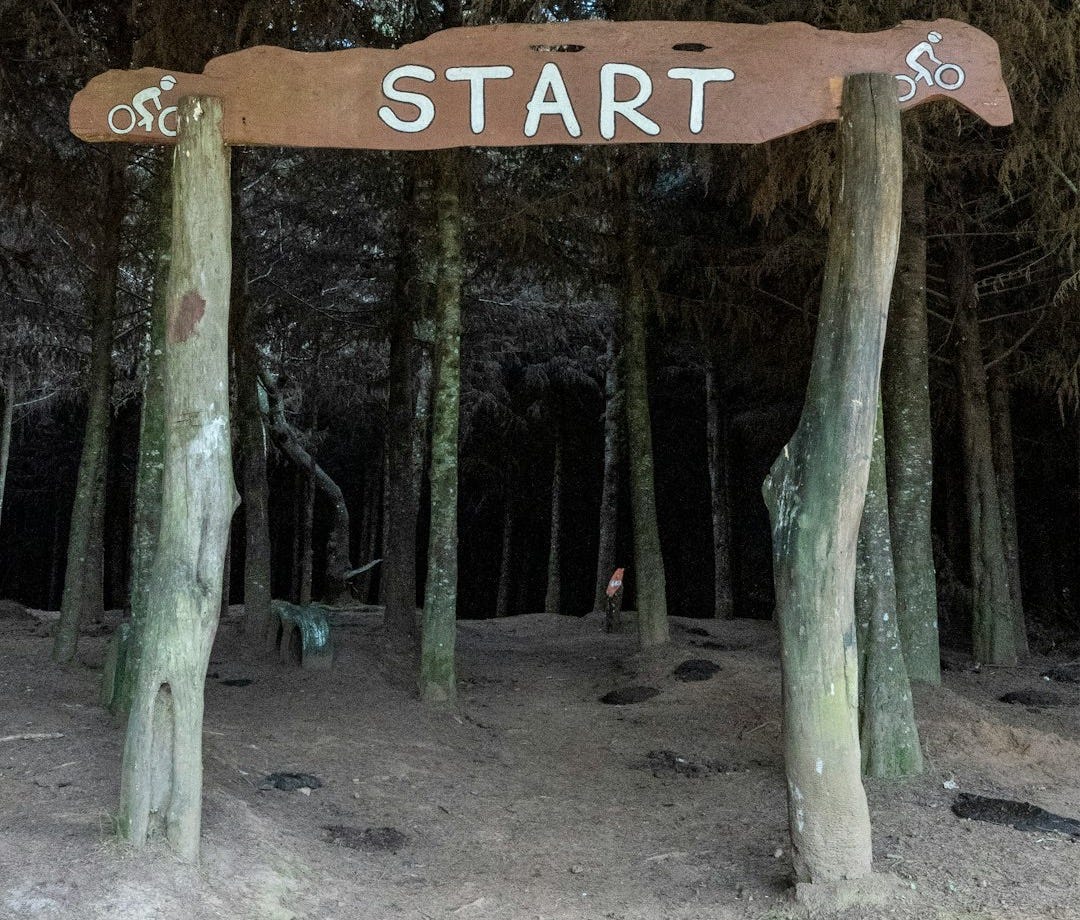This post was originally posted on thinknetwork.com.
When you first read a book about the agile journey, you attend a course or someone mentioned the ideas to you it, all sounds easy and simple. Starting is definitely an easy task – just do it.
And then the hard task starts. It is pretty clear your team needs some stuff. Some of these things might be already in your office, others might be missing. In my research on Google either my search or my results had been pretty sad. This is why I write this little kickstart guide. The content is based on my experience and learning with many agile teams in enterprise organizations. It’s purpose is to share some practices that worked for me over time. And yes I’m sorry it is going to be a steep stair you need to walk up.

Theory: What is a team facilitator?
Let’s just quickly explain why I’m not talking about the typical role names as they are written in the SCRUM Guide or any other official publication. In fact this is pretty easy. If you look at the role description of a SCRUM Master the logic is that you are responsible for the method and how your team works. Your role is build on the method and you are the master of this method within your team.
Ok now what happens if you are using KANBAN and not SCRUM as a method? Are you going to be all of a sudden a KANBAN Master? What if you are an exerpeinced SCRUM Master using a variation of agile, lean and other practices? Are you going to be an Agility Master? And is Agililty Master only linked to software development or IT? What if you are doing lean/agile coaching within an production environment or even finance?
In my personal opinion you are a Coach for a team. And even more looking at the responsibilities and accountabilities you need to facilitate the team to perform best. Said this I, and some other folks in the agile community, think that Team Facilitator is a pretty well role name describing what you actually do. Within a SCRUM based project you might call your project role SCRUM Master, sometimes you are an agile coach or even just a facilitator. In the end it doesn’t matter to much and still is one of the best terms. It focus on what counts most – the team.
Expectations from management and teams
In case a manager is willing to invest in you as a, hopefully, full-time facilitator (Scrum/Agility Master), they actually invest in increasing the capacity of the team. Now many people argue, a facilitator is a “non value adding resource”. In my honest opinion, if you think in resources first - don’t even consider going Agile.
The difference between output and outcome is one of the crucial elements here. And especially in the field of engineering outcome is a creative process. It doesn’t matter how much we like to standardize it, especially today with AI Copilots, the work of the engineer is about asking the guiding questions. The role of the facilitator is to leverage that engineering potential. This includes in my honest opinion anything from:
Contributing to the engineering outcome of the team, in any way possible
Ensuring quality, process conformity and outcome acceptance by the customer
Ensuring right level in advanced planning, preparation and alignment
Ensuring competence, experience and tools availability for the team
In larger organizational structures in my experience the following three KPIs are crucial and facilitators contribute directly to them. Meaning their work can be evaluated against them:
Predictability: This measures the team's ability to accurately forecast and deliver on their commitments. It can be calculated as the percentage of sprints or releases that meet their planned scope and timeline.
Escaped Defects: This measures the number of defects that make it to production. Lower escaped defects indicate higher quality and more reliable releases. This metric is often used in quality management frameworks like Six Sigma.
Defect Density: This measures the number of defects relative to the size of the software. Lower defect density indicates higher quality. This is a common metric in software engineering and is discussed in frameworks like the Capability Maturity Model Integration (CMMI).
In case you are working with frameworks such as SAFe you might also want to add Team Technical Assessments to evaluate a metric over time, that includes the regular feedback of the team members on their own performance.
Improving these KPIs and leveraging the potential of a team over time, is the capacity contribution of a facilitator. You should see changes on the most critical of these metrics already after your first 100 days working for the new team.
Practice: Starting your first team

Starting a new team is kind of the first challenge. Everything is new, from the method to the role and all of a sudden the people have new emotions too. And yes this assumes someone else allows you to do try this agile method.
This playbook gives you some anchor points to be used in an early state of your journey. It is based on my experience with many team facilitators (aka Scrum Masters, Agile Coaches, Agility Masters, …) and reviewed with their feedback.
In general I can say, it doesn’t matter from which professional field you start your journey as a facilitator. The challenges are fairly similar and you can identify at least your major topics.
Your first 3 month with a new team
Overview
The 3 month road book covers typically 6 sprints of 2 weeks.This is a common cadence for the learning of the agile methods. In an scaled environment (e.g. LESS; SAFe, …) you also will find an program iteration of about 5-6 sprints as a common cadence for scale.
Objective for your team
As a team we want to learn the method and get a good routine to understand the pro and cons of it within our environment.
Key results for the team
Each member of the team learned about the new terms, language, roles and procedures. He/she confirms with a confidence level from >=3 out of 5 this learning
We have all our relevant artifacts in place and reviewed them with our experienced agile coach.
We have a specific & ranked list of optimizations that we like to achieve within the methods and team organization in the next 3 month. At least 80% of these items can be resolved within the team.
Objectives for you as a team facilitator
As a team facilitator you like to get a certain level of security with applying the method. Your goal is to gain the first competencies to moderate, guide and develop your team. Your focus with that is on you individual learning of the new role.
Key results
You will be able to measure your success based on your capability to increase your competencies for facilitation. By the end of this first 3 month you are confident with:
Being the moderator for an agile awareness workshop with your team or an extended team group.
You have demonstrated the needed confidence to train someone with agile methodology knowledge the basics of the method used within your team.
You can explain to a team member the purpose of each of the artifacts within your method and get a positive understanding as feedback.
Achievements after the 3 month
Following the objectives above, you have a great opportunity to realize the following achievements or more. As mentioned, you should report the changes in the agreed central KPIs to your stakeholders (managers) too.
What our teams typically have achieved:
Definition of ready
Definition of done
Reference stories for estimations
Poker estimation experience
A list of possible optimizations for your development flow
A competency and learning overview for your team
A ranked list of enablers for your team
A prepared team backlog of features for your next program iteration
An overview of dependencies of your team
A documentation of the agile way of working within your team and program
Further information & reading
On our blog we have a even more detailed overview of objectives for the first 6 sprints. Additionally I recommend using the following prompt in your preferred chat to get some more information about the KPIs you can measure to proof your value add.
I need you as an experienced agile coach, that is supporting me as new Scrum Master in the first 6 month with an Agile team. The team is structured around system, software, hardware and system test engineers, all professionals in their fields.
As a Scrum Master I need to proof my value add to the organization and team. Which engineering KPIs shall I observe, measure and push for that we can proof the additional capacity of my person is creating more additional outcome of the team.
Please use references to existing research, studies or frameworks. If you do not know something, say so.



